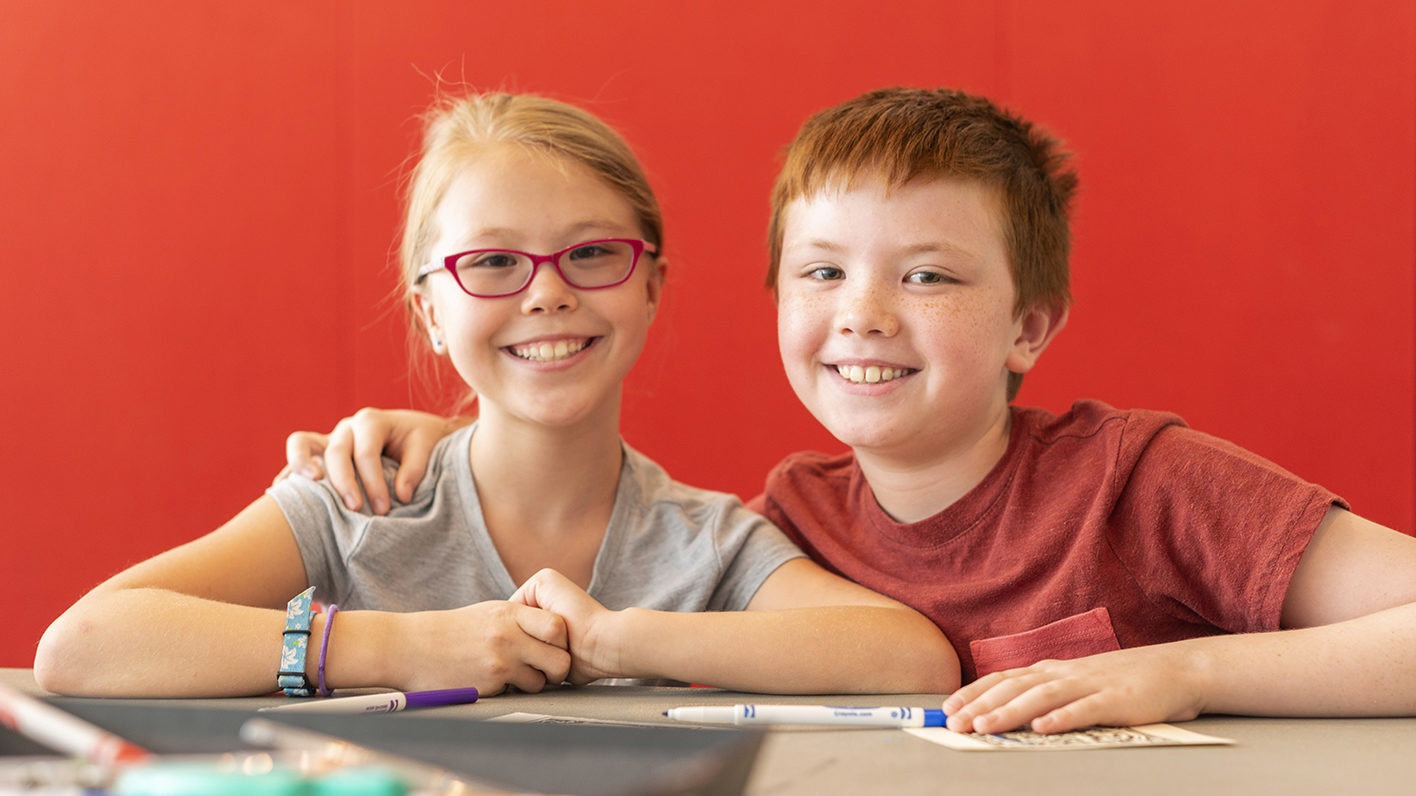
Hands ON! at Home
#HandsONatHome brings our monthly gallery-based program outside the walls of the Museum and into your home. Families are invited to engage in simple art practices using basic art supplies and household objects.
We want to see your creations, so be sure to put your photos on social media: #ShareNevadaArt #HandsONatHome and tag @nevadaart
Title Sponsorship for Hands ON! Second Saturdays
is provided by the Estelle J. Kelsey Foundation.
Media sponsorship by Entravision.
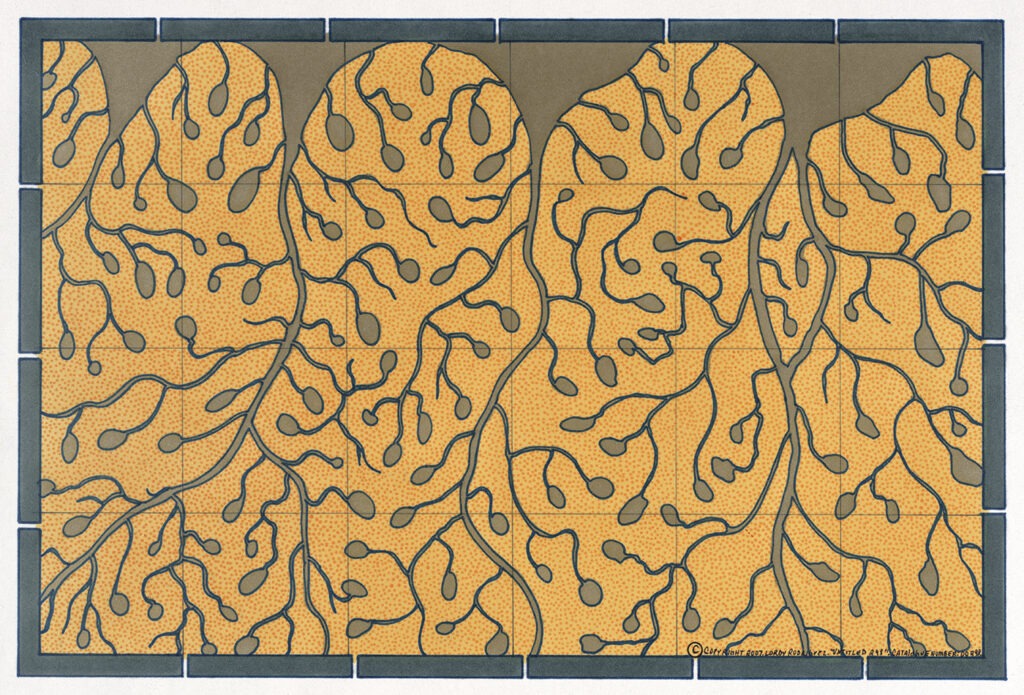
Hands ON! at Home by guest artist Lordy Rodriguez
Everywhere we look, inside and out, we find different patterns and textures. Artists will often “zoom in” to explore the smallest patterns as a way to make a work of art.
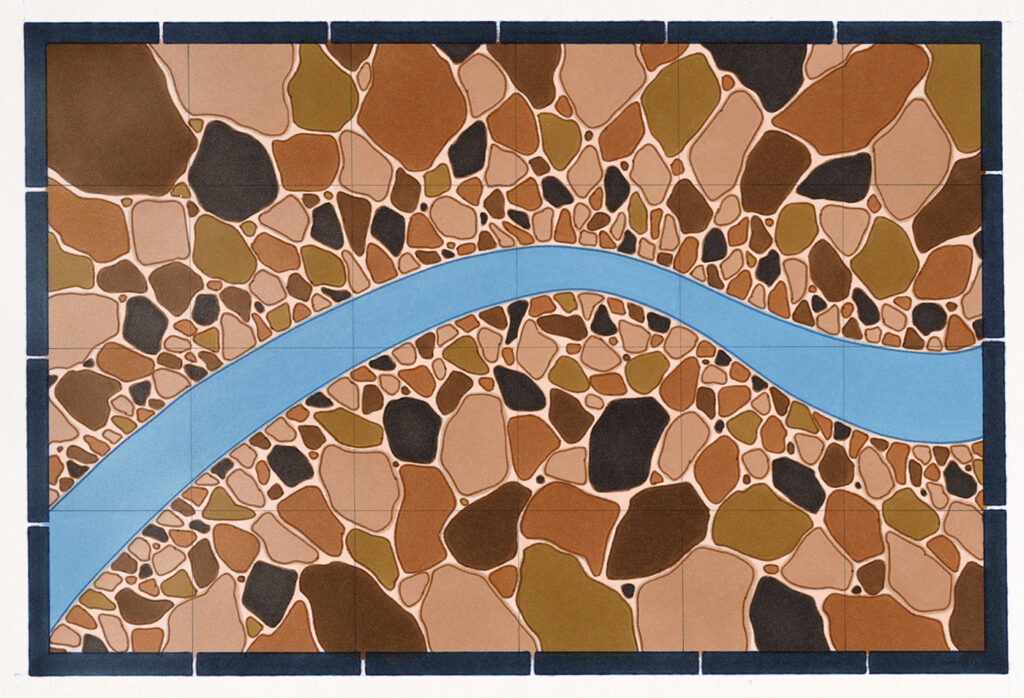
Bay Area artist Lordy Rodriguez makes maps filled with patterns and textures that represent the places he’s exploring. Sometimes he uses patterns found in the natural world. Other times he incorporates patterns found in a favorite blanket or article of clothing.
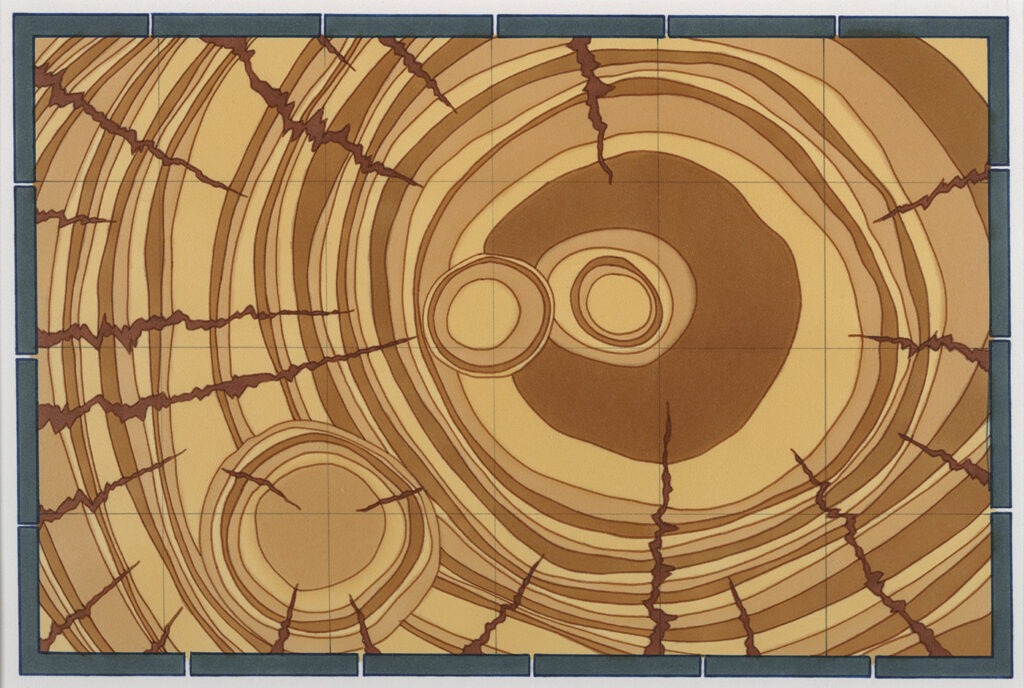
Look around you! What sorts of patterns and textures can you find in everyday objects? Think about the wood grain on a dining room table or the leaves of a tree. Consider the fur on your favorite pet or wildlife in your neighborhood.
Using the state of Nevada or Lake Tahoe as a template, try creating your own patterned map inspired by patterns you discover in your surroundings. Think about using patterns and colors that reflect our great state and region.
Materials:
- Colored Pencils or Markers
- Scratch paper or sketch pad
- Printed template of Lake Tahoe or Nevada
Instructions:
- Take a walk through your neighborhood with your family or friends and carefully observe the world around you thinking about patterns and textures.
- Look closely to identify patterns and sketch them out.
- Print out the templates of Lake Tahoe or Nevada or draw your own.
- Use bright colors! Think about the ways the colors can communicate pattern and texture. Try colors that are different than the colors you observed.
[ CREDITS ] Untitled 298, Rodriguez, Lordy, 2008, ink on paper, Collection of the Nevada Museum of Art, Gift of the artist. Untitled 508, Rodriguez, Lordy, 2008, ink on paper, Collection of the Nevada Museum of Art, Gift of the artist. Untitled 356, Rodriguez, Lordy, 2008, ink on paper, Collection of the Nevada Museum of Art, Gift of the artist.
Hands ON! desde casa por el artista invitado Lordy Rodriguez
Al observar a todos lados, dentro y fuera, encontramos diferentes patrones y texturas. Los artistas a menudo harán un acercamiento para explorar los patrones más pequeños como una forma para realizar una obra de arte.

El artista del Área de la Bahía, Lordy Rodríguez realiza mapas llenos con patrones y texturas que representan los lugares que él explora. A veces él utiliza patrones encontrados en el mundo natural. Otras veces incorpora patrones encontrados en su frazada favorita o un artículo de tela.

¡Observa a tu alrededor! ¿Qué tipo de patrones y texturas puedes encontrar en objetos cotidianos? Piensa en una veta de madera sobre un comedor o las hojas de un árbol. Considera el pelaje de tu mascota o animal salvaje favorito en tu vecindario.
Utiliza el estado de Nevada o el Lago Tahoe como plantilla, intenta crear tu propio mapa adornado e inspirado en los patrones que hayas descubierto a tu alrededor. Piensa en cómo utilizar patrones y colores que reflejen nuestro gran estado y la región.
Materiales:
- Lápices de colores o marcadores
- Hoja de papel o bloc de dibujo
- Una plantilla impresa del Lago Tahoe o Nevada
Instrucciones:
- Da un paseo a través de tu vecindario con tu familia o amigos y observa cuidadosamente el mundo a tu alrededor y piensa en patrones y texturas.
- Observa de cerca para identificar patrones y dibújalos.
- Imprime las plantillas del Lago Tahoe o Nevada o dibuja tus propias plantillas.
- ¡Utiliza colores brillantes! Piensa en la manera en que los colores pueden comunicar patrones y texturas. Intenta con colores que sean diferentes a los que observaste.
[ Títulos de Imágenes ] Untitled 298, Rodriguez, Lordy, 2008, ink on paper, Collection of the Nevada Museum of Art, Gift of the artist. Untitled 508, Rodriguez, Lordy, 2008, ink on paper, Collection of the Nevada Museum of Art, Gift of the artist. Untitled 356, Rodriguez, Lordy, 2008, ink on paper, Collection of the Nevada Museum of Art, Gift of the artist.
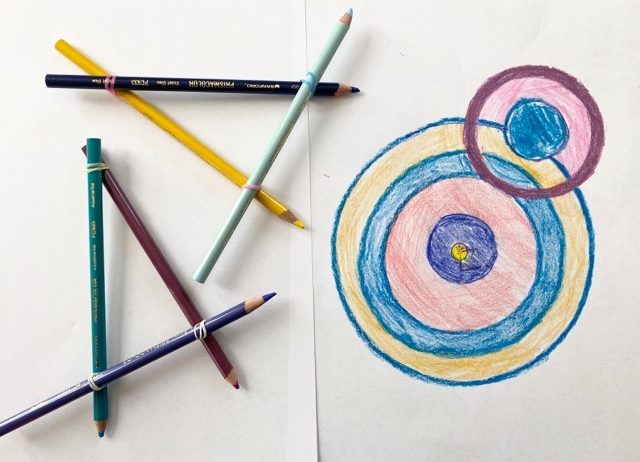
“Concentric” describes shapes, like circles, that have a common center or axis. Shapes may be layered on top of one another, and may change form, but always share the same common center axis. Below are several works from the Museum’s Collection that illustrate concentric shapes using a variety of mediums, processes and techniques. Ken Goldberg and his team use computers and live data to generate layered concentric circles on a screen. Lita Albuquerque uses marks in the landscape to create patterns on the earth. Erika Osborne uses graphite to take rubbings of tree rings found in nature.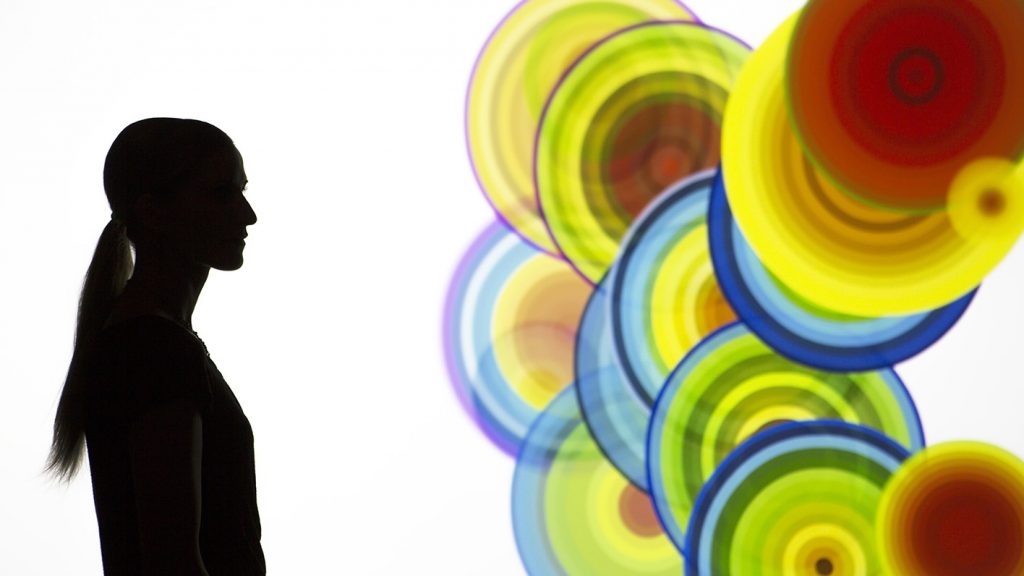
Look carefully at the images. What do you see? Can you identify the common center axis in each work? What kinds of tools or materials were used to create these artworks? Where might you encounter similar works of art?
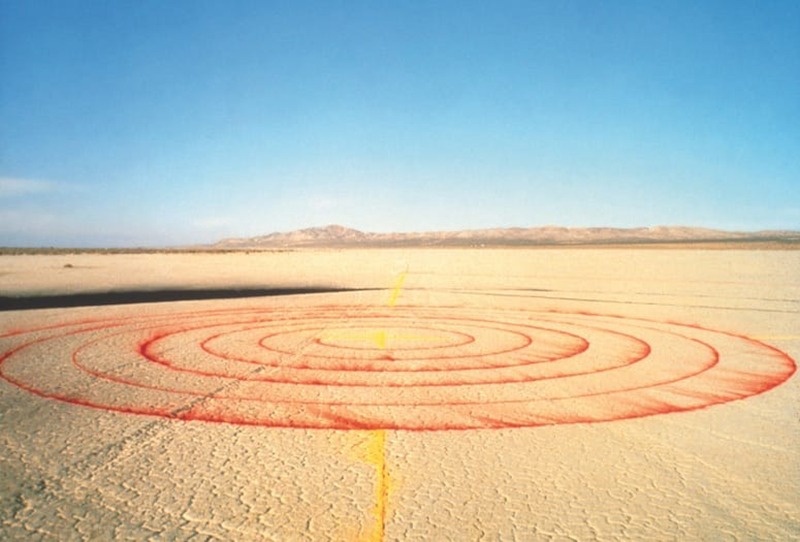 Can you identify examples of concentric circles found in nature? Think about the rings of a tree, fingerprints, or a pebble tossed into still water. Can you locate examples in your home, like the rings of an onion or a vinyl record?
Can you identify examples of concentric circles found in nature? Think about the rings of a tree, fingerprints, or a pebble tossed into still water. Can you locate examples in your home, like the rings of an onion or a vinyl record?
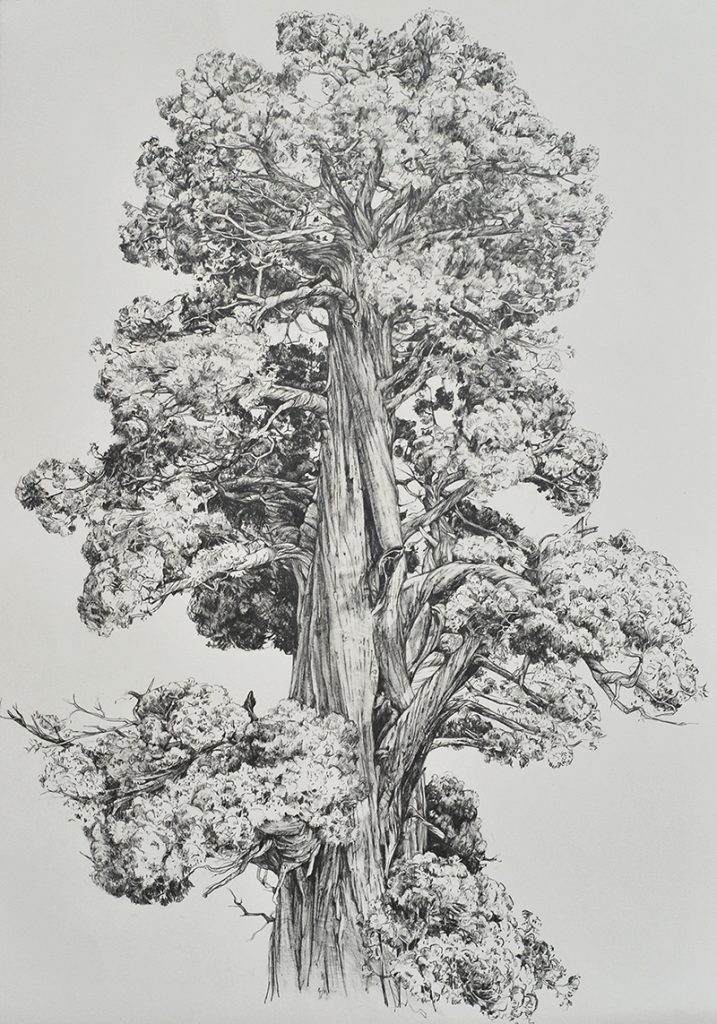
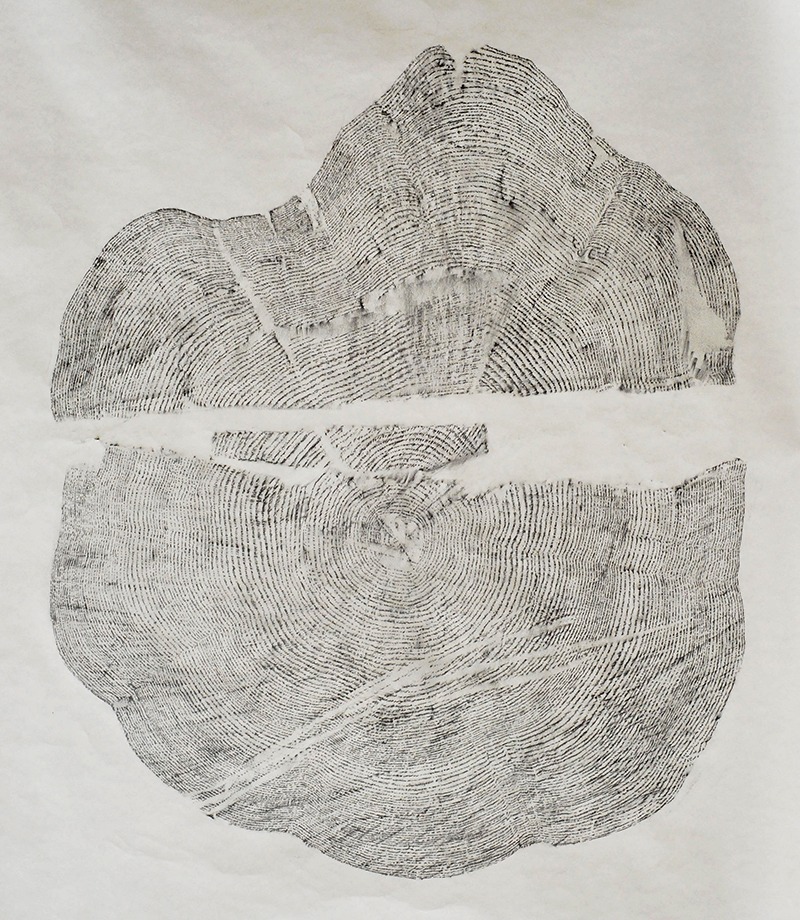
Now, let’s create!
- Drawing can be a meditative process. Try drawing concentric circles free hand. What do you notice about the shapes? Are they perfectly round or do they look more organic?
- Continue this process of drawing and layering circles. Try tracing your thumbprint or fingerprint. Use the tracing to create a central axis then continue to radiate the circles outward.
- Next, try building a DIY COMPASS to create perfect concentric circular patterns. This simple tool can help you draw circles or arcs by anchoring to a central axis.
- Things you will need: Three pencils or pens, Three rubber bands, Paper
- Line up the tips of two of the pencils and wrap them together using one of the rubber bands towards the unsharpened end.
- Separate the two pencil tips to make two sides of a triangle. Line them up vertically.
- Lie the third pencil across horizontally just above the pencil tips to make the third side of the triangle and attach rubber band to each side.
- Experiment! Try squeezing the pencils to change the angle and size of the circle. Place one of the vertical pencils on the page as your axis point and rotate the pencil to create an arc or a circle. Change the size of your angle to create concentric circles of varying sizes.
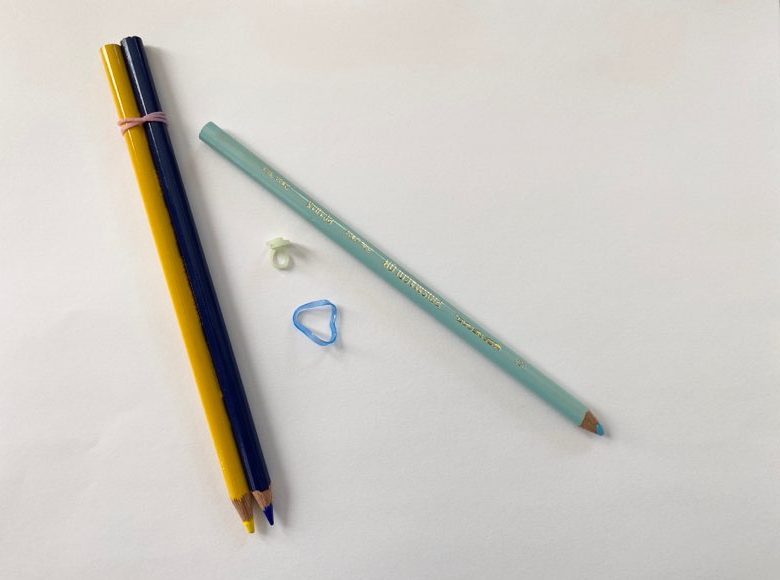
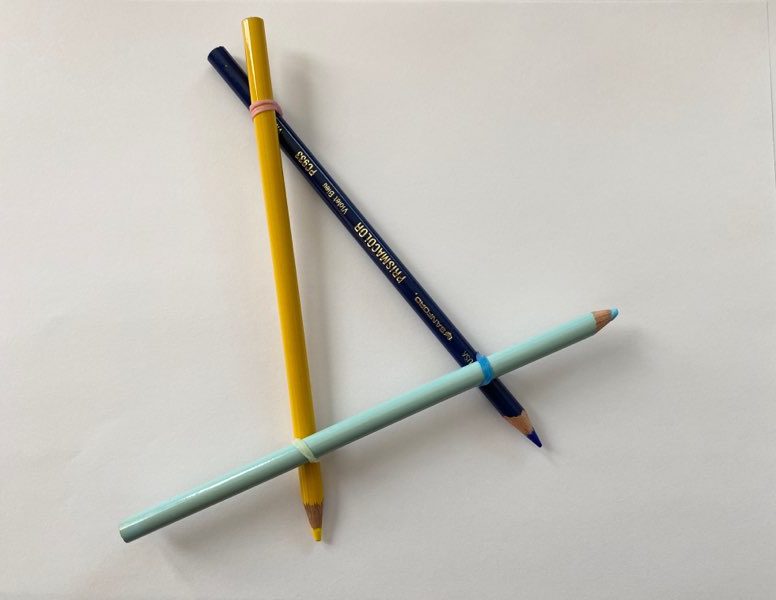
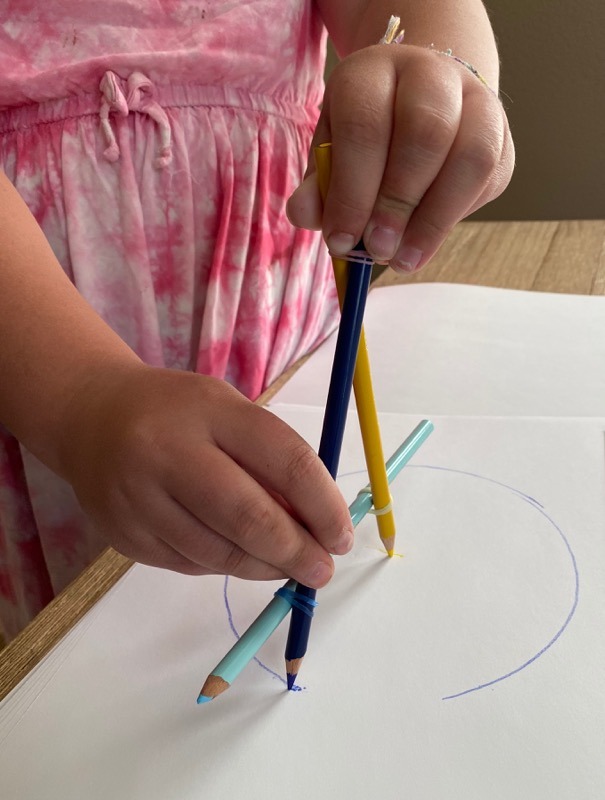

Share a photo of your creation on social media: #ShareNevadaArt and #HandsONatHome, tag @nevadaart
[ Credits ] IMAGE 1: Ken Goldberg, Sanjay Krishman, Fernanda Viégas and Martin Wattenberg, BLOOM, 2012. Custom software with live data feed, Variable dimensions. Collection of the Nevada Museum of Art, Museum purchase with funds provided by deaccessioning. IMAGE 2: Lita Albuquerque, Spine of the Earth. 1980-printed 2014, digital pigment print. Collection of the Nevada Museum of Art, The Altered Landscape, Carol Franc Buck Collection. IMAGE 3: Erika Osborne, Ponderosa Pine-Angora, 2014, graphite on paper. Collection of the Nevada Musuem of Art, Museum purchase with funds from deaccessioning.
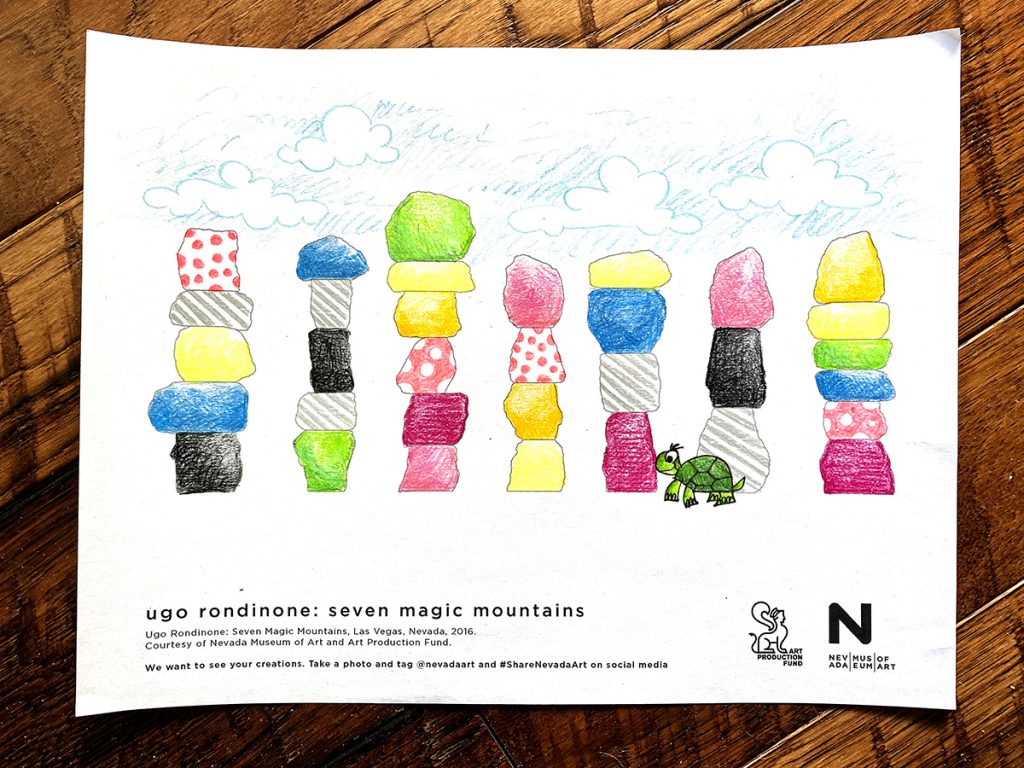
Artist Ugo Rondinone has said that "Seven Magic Mountains is an artwork of thresholds and crossings, of seclusion and gathering, of balanced marvels and excessive colors, and the contrary air between the desert and the city lights." His iconic artwork has brought joy to hundreds of thousands of people, so it seems only fitting that the work should now be able to foster smiles for millions more through the Seven Magic Mountains coloring sheet.
Grab your pencils, your markers, or your iPad, and set your imagination free.
Show us your creations: tag @NevadaArt + @ArtProductionFun and #ShareNevadaArt
El artista Ugo Rondinone ha dicho que "Seven Magic Mountains es una obra de arte de umbrales y cruzamientos, de aislamiento y reunión, de maravillas balanceadas y colores excedentes, y del aire contrario entre el desierto y las luces de la ciudad". Su icónica obra de arte ha traído alegría a cientos de miles de personas, así que ahora parece apropiado que la obra deba poder promover sonrisas a millones más a través de la hoja para colorear de Seven Magic Mountains
Agarra tus colores, tus marcadores, o tu IPad, y libera tu imaginación.
Descarga la hoja para colorear.
Muéstranos tus creaciones: etiqueta @NevadaArt + @ArtProductionFun y #ShareNevadaArt
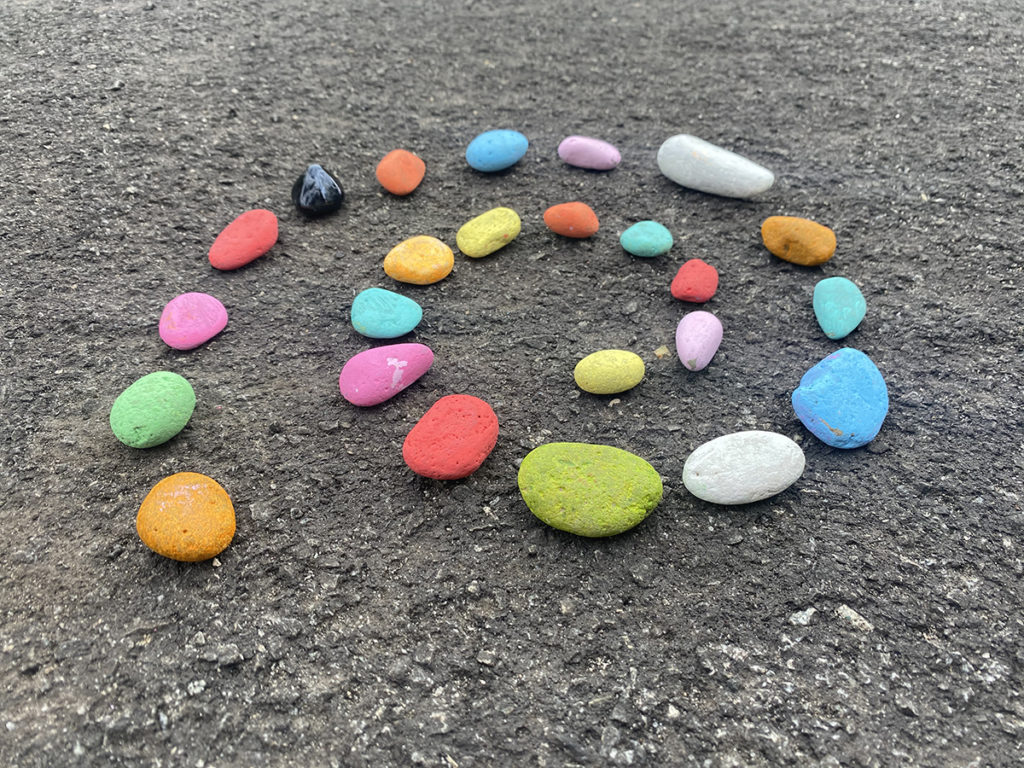
Land Art is art made directly in the landscape by sculpting the land itself through mark-making, excavating the land to create forms, or making structures using natural materials such as rocks or twigs. Sometimes known as Earth Art, Land Art first started in the 1960s and 1970s when a group of pioneering conceptual artists began making artworks outside of traditional museums and galleries. The movement has evolved over the decades, sparking a variety of responses and even contemporary examples.
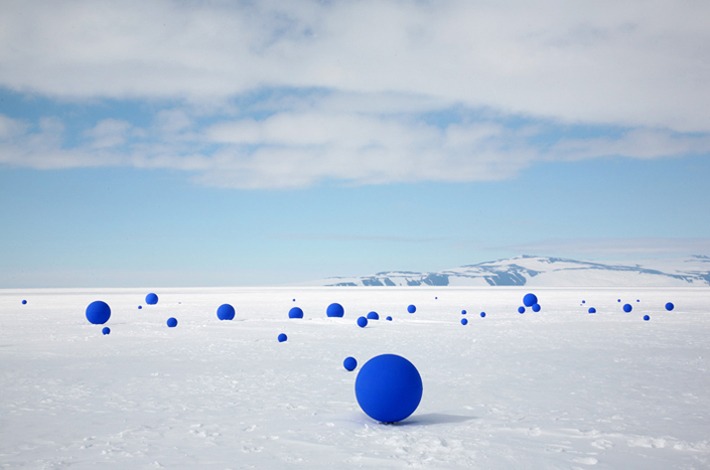

Look carefully at the images. What do you see? How do you think the artists created these works? What kinds of tools or equipment were needed to build these sculptures on the landscape? Do you think the artist worked alone or with a team of people?
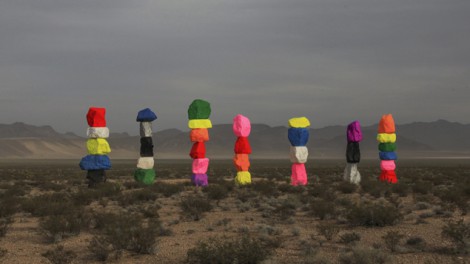
Go outside and observe the world around you. Can you identify various ways that humans and artists have interacted with the landscape? Can you find ways to creatively engage with the landscape?

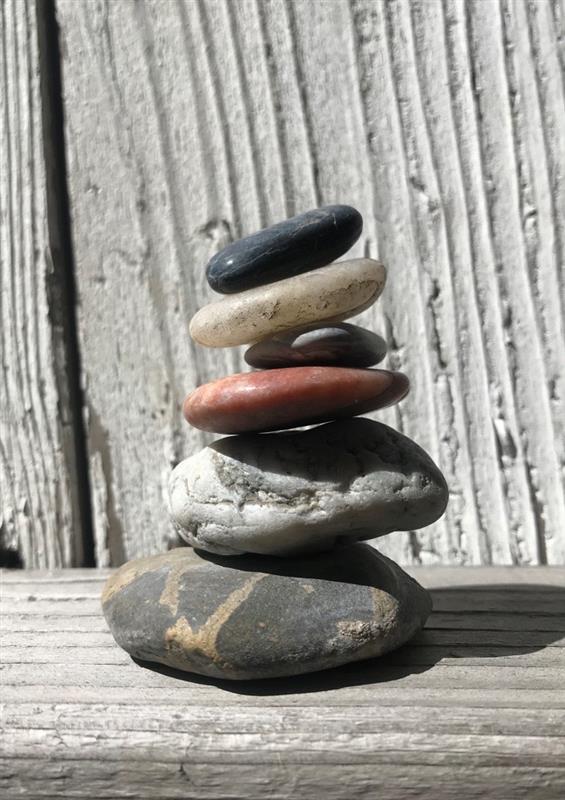
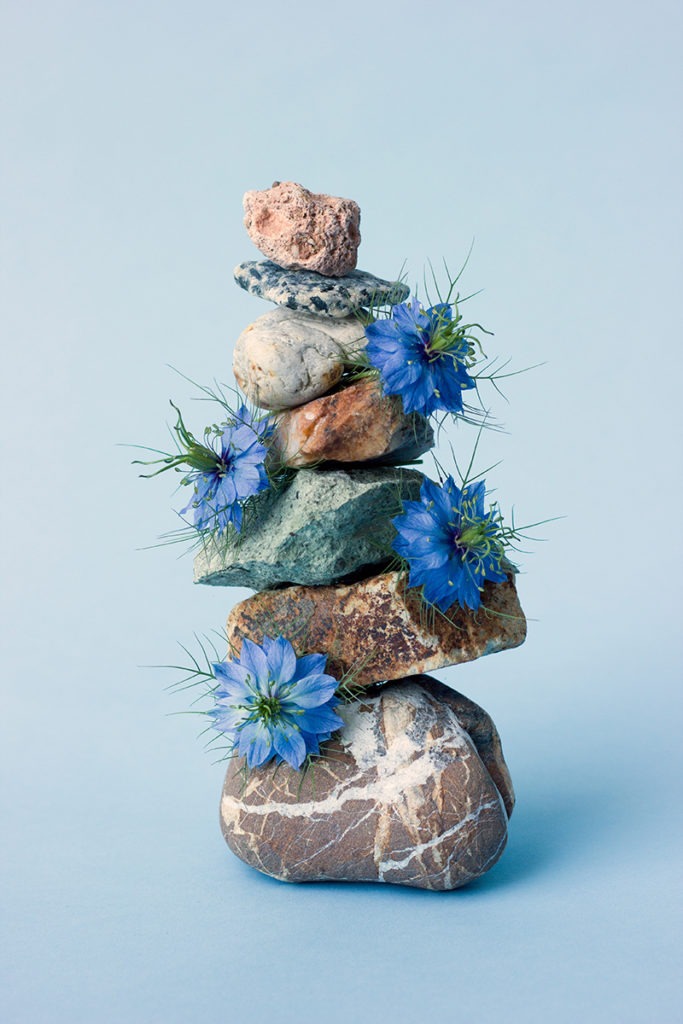
Now, let’s explore and create!
- Go for a walk or hike and gather stones of varying shapes and sizes that you find interesting.
- Clean your rocks and decorate them using your imagination. Paint them or add additional natural elements like leaves or flowers, or cover your rocks with paper, collage, and even foil.
- Stack your stones or lay them out to create a pattern or design. Can you balance your rocks?
- Can you recreate Seven Magic Mountains? Can you make a spiral pattern like Robert Smithson’s Spiral Jetty?
- Determine where you want to display your artwork. Who will see it? What will it mean to the person who finds it?
Share a photo of your creation on social media: #ShareNevadaArt and #HandsONatHome, tag @nevadaart
[ Credits ] IMAGE 1: Lita Albuquerque: Stellar Axis (CAE1024) is in the Collection of Nevada Museum of Art, Center for Art + Environment Archive Collections. Gift of Lita Albuquerque. Stellar Axis was photographed in Antarctica by Jean De Pomereu.IMAGE 2: Robert Smithson, Gianfranco Gorgoni, Robert Smithson’s Spiral Jetty, 1970, 2013. Digital archival print, Photograph from the Collection of the Nevada Museum of Art, The Altered Landscape, Carol Franc Buck Collection; Photograph © Estate of Gianfranco Gorgoni; Artwork from the Collection of Dia Art Foundation; Artwork © Holt/Smithson Foundation and Dia Art Foundation. IMAGE 3: Ugo Rondinone: Seven Magic Mountains, Las Vegas, Nevada, 2016. Photo by Gianfranco Gorgoni. Courtesy of Art Production Fund and Nevada Museum of Art. IMAGE 4: Claire Muñoz, Rock Study, 2020. IMAGE 5: Jessica Imus, Rock Study, 2020. IMAGE 6: Laura DeAngelis, Cairn Studies, 2017.
A menudo pensamos en “paisajes” como escenas de bellos campos, majestuosas montañas, u océanos y playas. Sin embargo, artistas representan paisajes de muchas maneras, inspirados por diferentes entornos a sus alrededores. Estos ejemplos de paisajes hechos por artistas en la colección permanente del Nevada Museum of Art, abarcan desde hermosas escenas al aire libre a lo abstracto o incluso vistas urbanas de la ciudad.


Observa cuidadosamente cada una de las imágenes. Intenta observar una sola pieza por 60 segundos. ¿Qué ves? ¿Qué tipo de entornos están representados? ¿Quién o qué vive en cada uno de los paisajes?

¿Puedes imaginarte a ti mismo en estos diferentes entornos? Crea una historia para cada uno de los paisajes. Pretende que eres un animal viviendo en esta pintura. ¿Qué eres? ¿Cómo sería tu día en este entorno?



Ahora, ¡Vamos a crear!
· Utiliza las obras de arte como inspiración para crear tu propio paisaje.
· Recrea alguno de los paisajes que ves, agrégate a ti y a tu familia, o agrega animales en la escena.
· También puedes crear un paisaje nuevo basado en tu propio entorno personal. Mira hacia tu ventana. ¿Qué ves?
· Utiliza materiales a tu disposición para crear tu paisaje. Piensa en un collage, dibujo, pintura, fotografías, animales de peluche, objetos domésticos, y más. ¡Deja que tu imaginación vuele!
Comparte una fotografía de tu creación en redes sociales: #ShareNevadaArt y #HandsONatHome, etiquétanos en @nevadaart
[ Credits ] IMAGE 1: Lita Albuquerque: Stellar Axis (CAE1024) is in the Collection of Nevada Museum of Art, Center for Art + Environment Archive Collections. Gift of Lita Albuquerque. Stellar Axis was photographed in Antarctica by Jean De Pomereu.IMAGE 2: Robert Smithson, Gianfranco Gorgoni, Robert Smithson’s Spiral Jetty, 1970, 2013. Digital archival print, Photograph from the Collection of the Nevada Museum of Art, The Altered Landscape, Carol Franc Buck Collection; Photograph © Estate of Gianfranco Gorgoni; Artwork from the Collection of Dia Art Foundation; Artwork © Holt/Smithson Foundation and Dia Art Foundation. IMAGE 3: Ugo Rondinone: Seven Magic Mountains, Las Vegas, Nevada, 2016. Photo by Gianfranco Gorgoni. Courtesy of Art Production Fund and Nevada Museum of Art. IMAGE 4: Claire Muñoz, Rock Study, 2020. IMAGE 5: Jessica Imus, Rock Study, 2020. IMAGE 6: Laura DeAngelis, Cairn Studies, 2017.
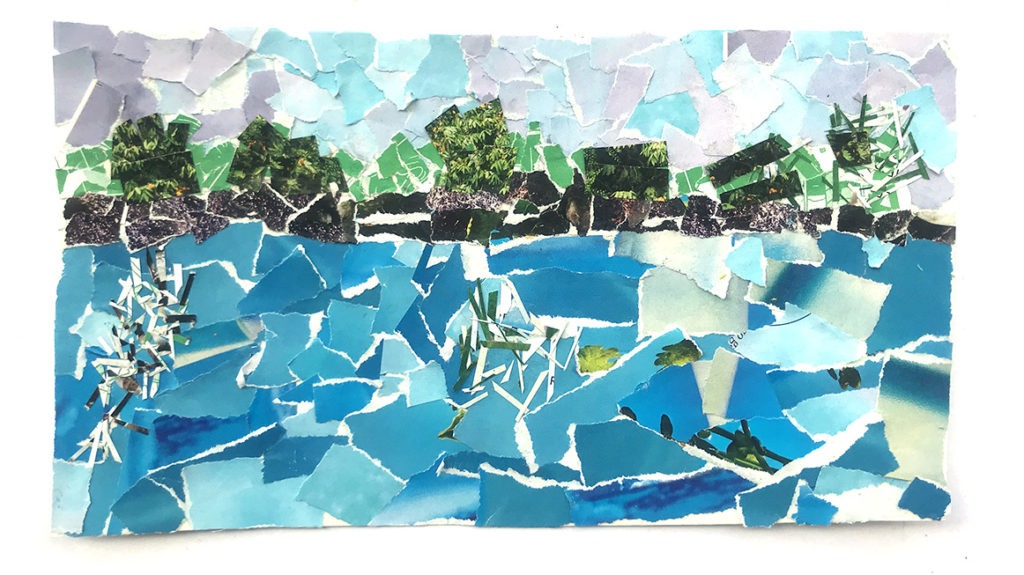
We often think of “landscapes” as scenes of beautiful countrysides, majestic mountains, or oceans and beaches. However, artists depict landscapes in many ways, inspired by the different environments around them. These are examples of landscapes made by artists in the Nevada Museum of Art permanent collection. They range from beautiful outdoor scenes to abstract or even urban city views.
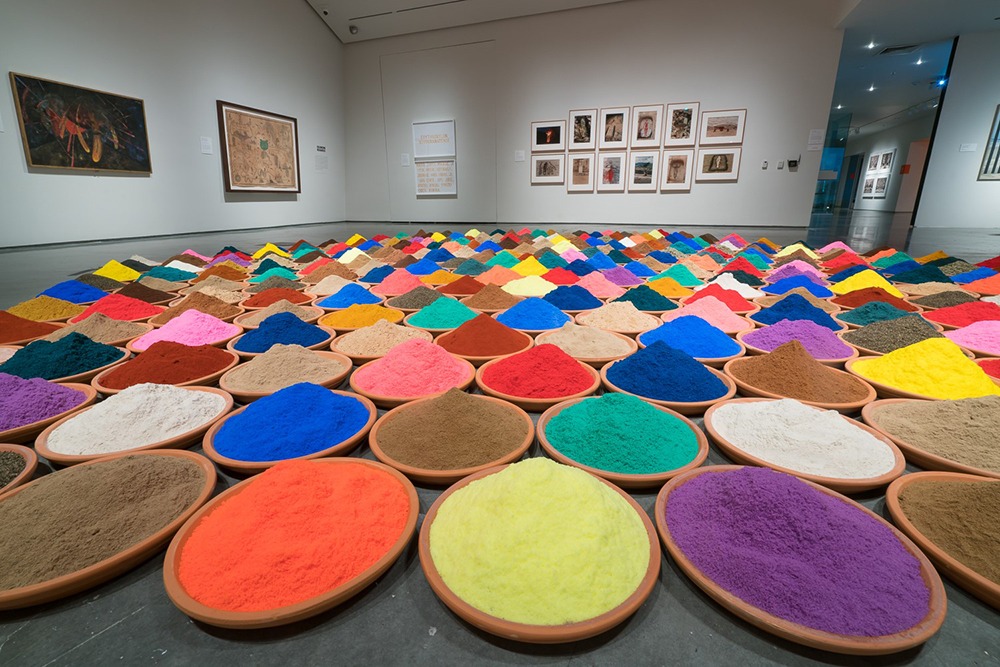
Look at each image carefully. Try and spend 60 seconds looking at a single piece. What do you see? What kinds of environments are represented? Who or what lives in each landscape?
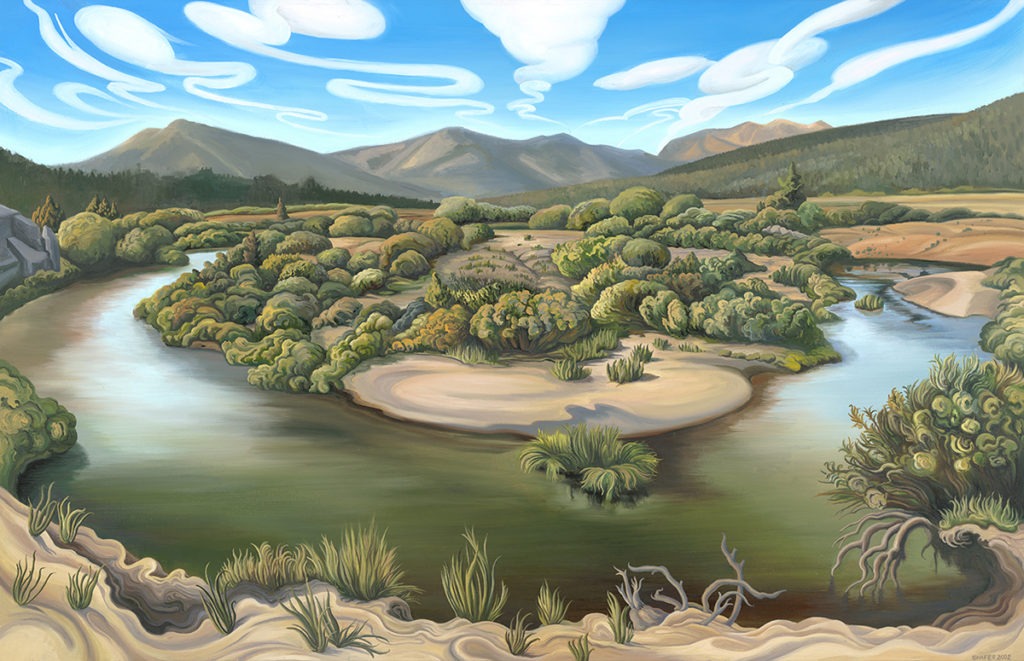
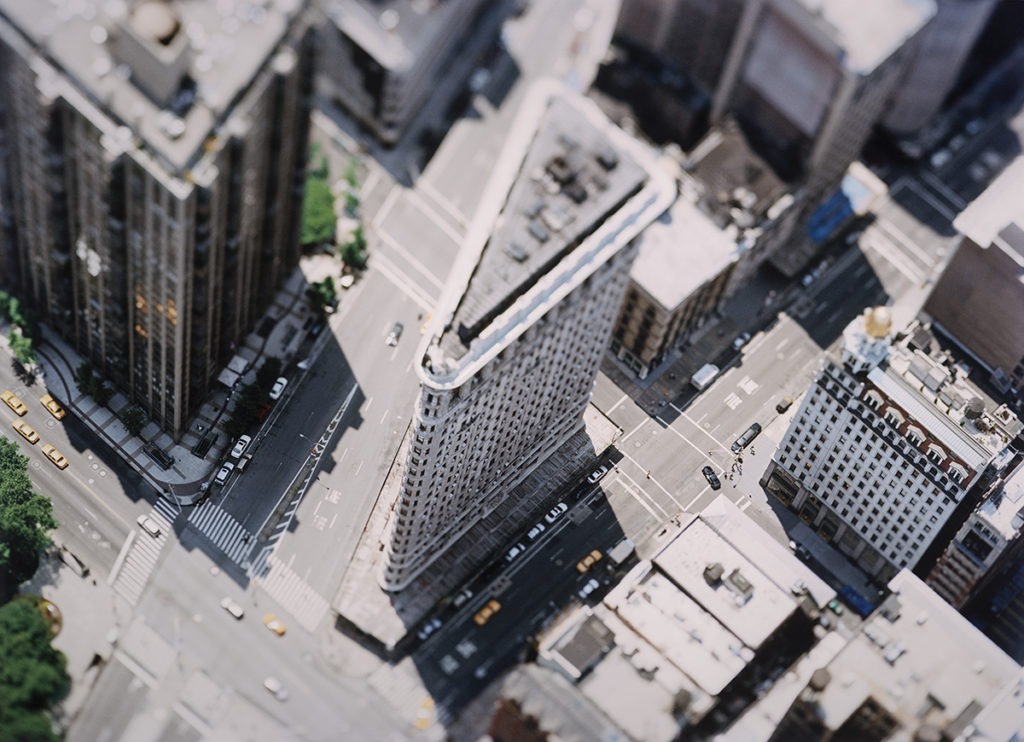
Can you imagine yourself in these different environments? Create a story for each environment. Pretend that you are an animal living in this picture. What are you? What would your day be like in this environment?
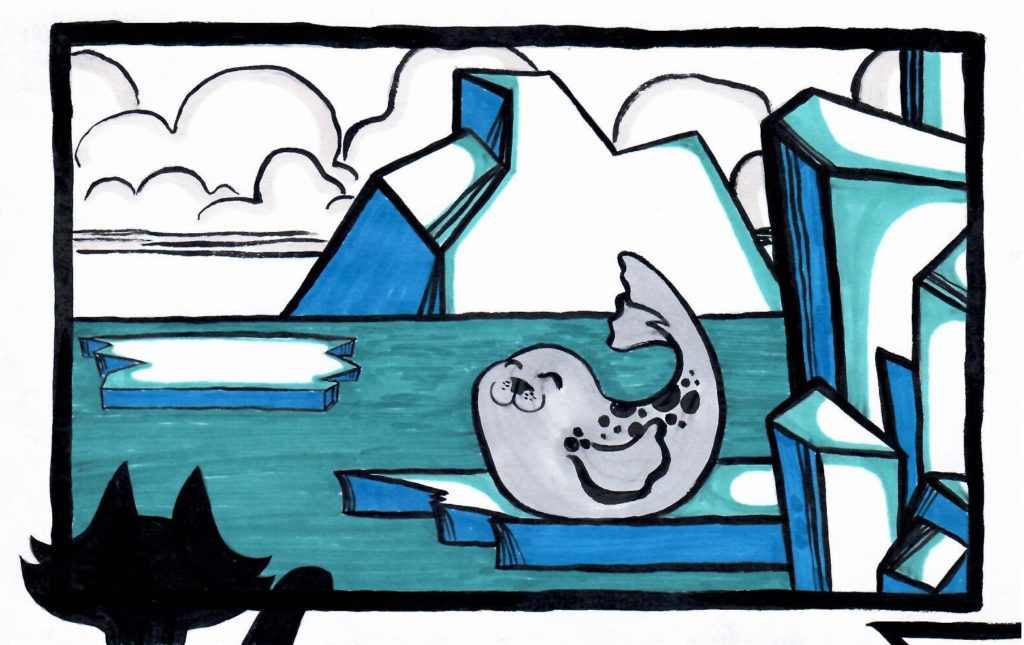
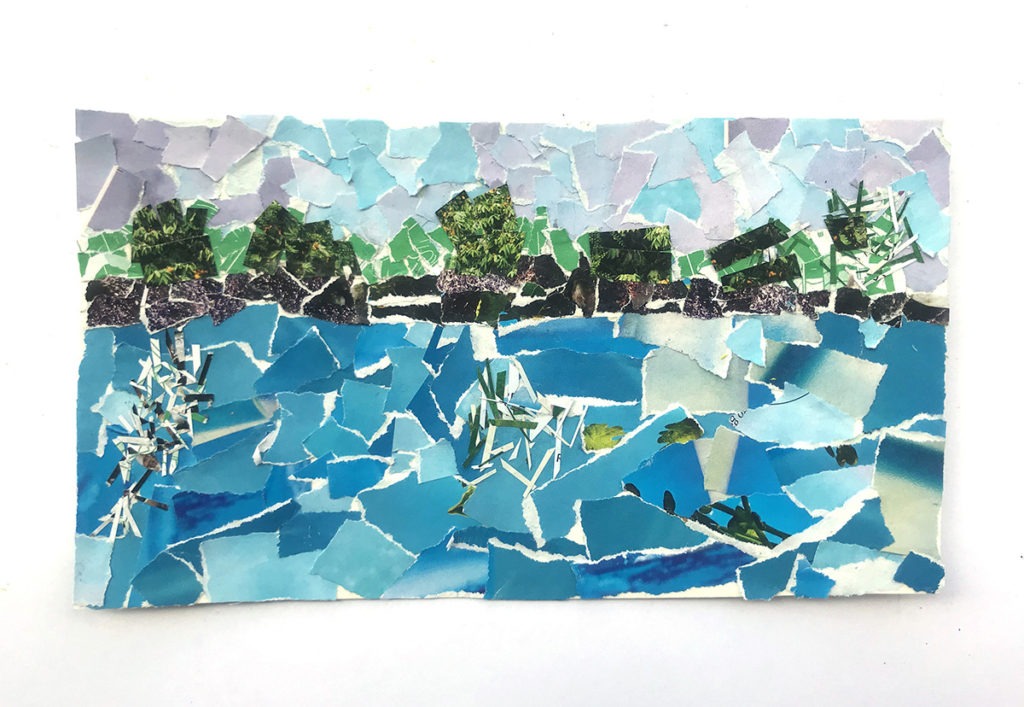
Now, let’s create!
- Use the artworks as inspiration to create your own landscape.
- Re-create any of the landscapes you see, adding yourself, your family, or animals into the scene.
- Think about “going on a trip” to these places. What would you need to pack?
- You can also create a new landscape based on your own personal environment. Look out your window. What do you see?
- Use materials available to you to create your landscape. Think collage, drawing, painting, photos, stuffed animals, household objects, and more. Let your imagination run wild!
Share a photo of your creation on social media: #ShareNevadaArt and #HandsONatHome, tag @nevadaart
A menudo pensamos en “paisajes” como escenas de bellos campos, majestuosas montañas, u océanos y playas. Sin embargo, artistas representan paisajes de muchas maneras, inspirados por diferentes entornos a sus alrededores. Estos ejemplos de paisajes hechos por artistas en la colección permanente del Nevada Museum of Art, abarcan desde hermosas escenas al aire libre a lo abstracto o incluso vistas urbanas de la ciudad.

Observa cuidadosamente cada una de las imágenes. Intenta observar una sola pieza por 60 segundos. ¿Qué ves? ¿Qué tipo de entornos están representados? ¿Quién o qué vive en cada uno de los paisajes?


¿Puedes imaginarte a ti mismo en estos diferentes entornos? Crea una historia para cada uno de los paisajes. Pretende que eres un animal viviendo en esta pintura. ¿Qué eres? ¿Cómo sería tu día en este entorno?


Ahora, ¡Vamos a crear!
Utiliza las obras de arte como inspiración para crear tu propio paisaje.
Recrea alguno de los paisajes que ves, agrégate a ti y a tu familia, o agrega animales en la escena.
También puedes crear un paisaje nuevo basado en tu propio entorno personal. Mira hacia tu ventana. ¿Qué ves?
Utiliza materiales a tu disposición para crear tu paisaje. Piensa en un collage, dibujo, pintura, fotografías, animales de peluche, objetos domésticos, y más. ¡Deja que tu imaginación vuele!
Comparte una fotografía de tu creación en redes sociales: #ShareNevadaArt y #HandsONatHome, etiquétanos en @nevadaart
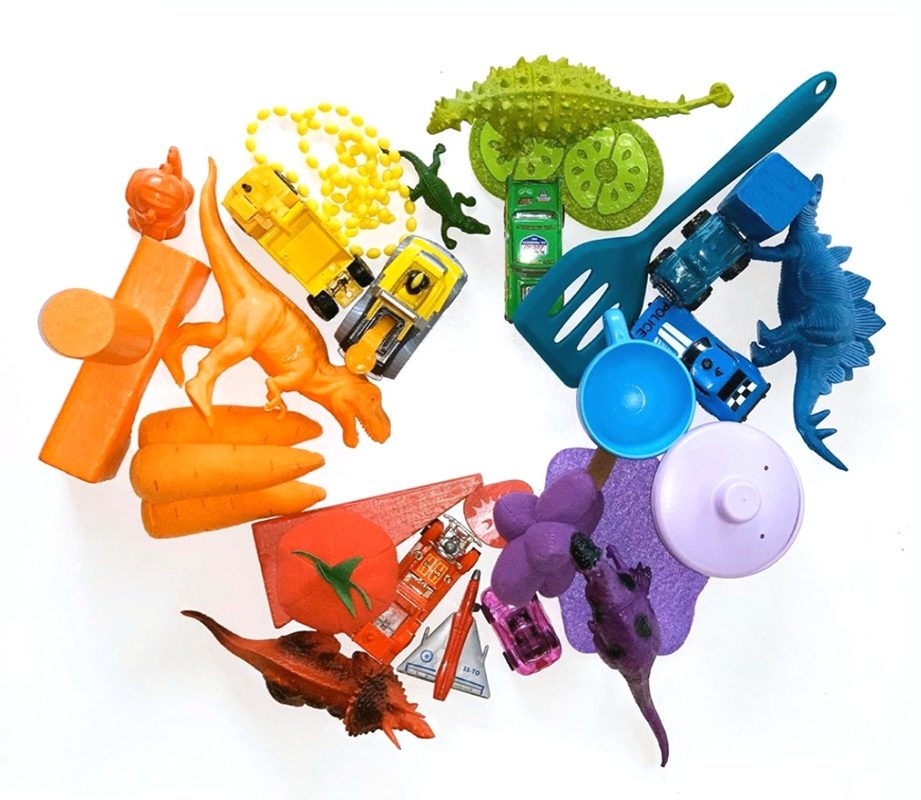
Color wheels show us how colors are related. Artists use the color wheel to see how to mix and think about colors.
The primary colors are:

Primary colors cannot be made from other colors. Artists create all the other colors of the rainbow by mixing the primary colors.
The secondary colors are:

Secondary colors are made by mixing two primary colors. Each secondary color is made from the two primary colors closest to it on the color wheel. Just by mixing these colors, you can get all the colors of the rainbow.
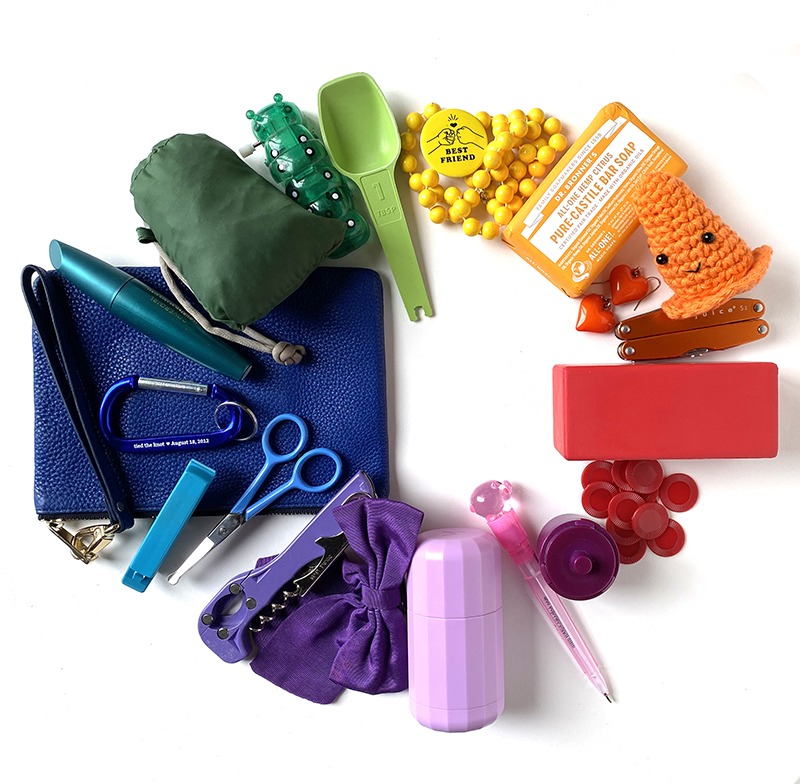
Now #ShareNevadaArt and tag #HandsONatHome:
- Create a color wheel using items that you find around the house!
- Start with the primary colors and then add in the secondary colors.
- How many variations of the color wheel can you create?
- What items are you using?
- How many items do you have that are primary colors?
- How many items are secondary colors?
Las ruedas cromáticas o de colores show nos muestran cómo los colores están relacionados. Los y las artistas utilizan la rueda de color para observar cómo mezclar y pensar en los colores.
Los colores primarios son:

Los colores primarios no pueden ser hechos de otros colores. Los y las artistas crean todos los demás colores del arcoíris al mezclar los colores primarios.
Los colores secundarios son: 
Los colores secundarios se hacen al mezclar dos colores primarios. Cada color secundario está hecho de los dos colores primarios más cercano a él en la rueda de colores. Justo con mezclar estos colores, puedes obtener todos los colores del arcoíris.
Observa esta rueda de colores:

Ahora #ShareNevadaArt y etiqueta #handsondesdecasa:
- ¡Puedes recrear la rueda de colores utilizando cosas que encuentres por toda tu casa!
- Comienza con los colores primarios y después agrega los colores secundarios.
- ¿Cuántas variaciones de la rueda de colores puedes crear?
- ¿Qué cosas estás utilizando?
- ¿Cuántas cosas tienes que sean de los colores primarios?
- ¿Cuántas cosas son los colores secundarios